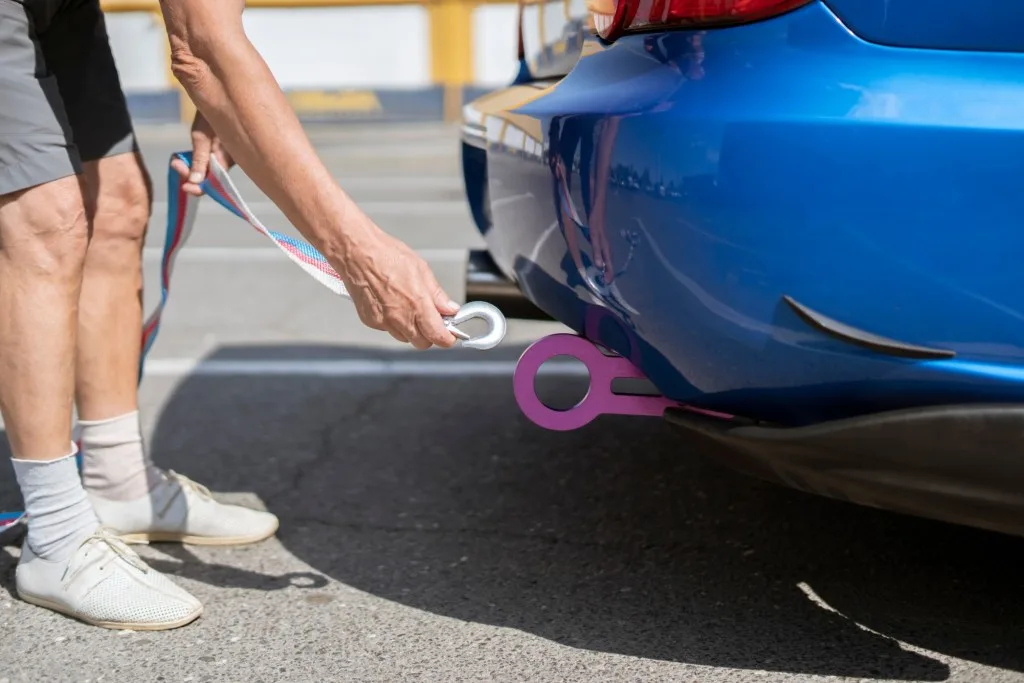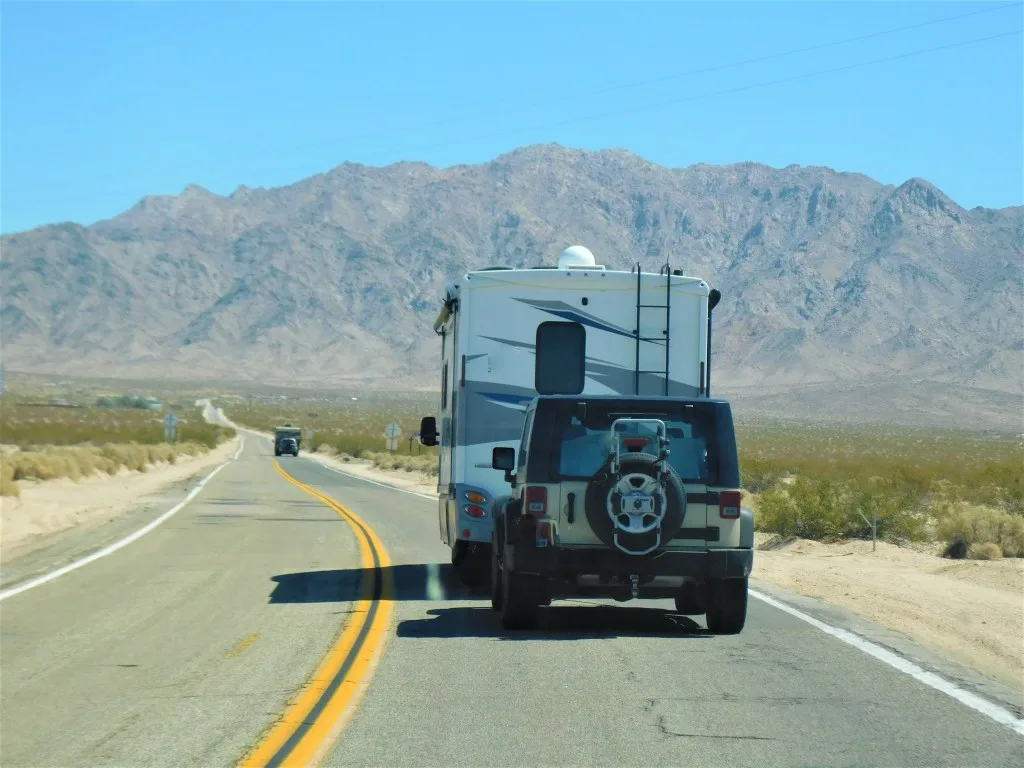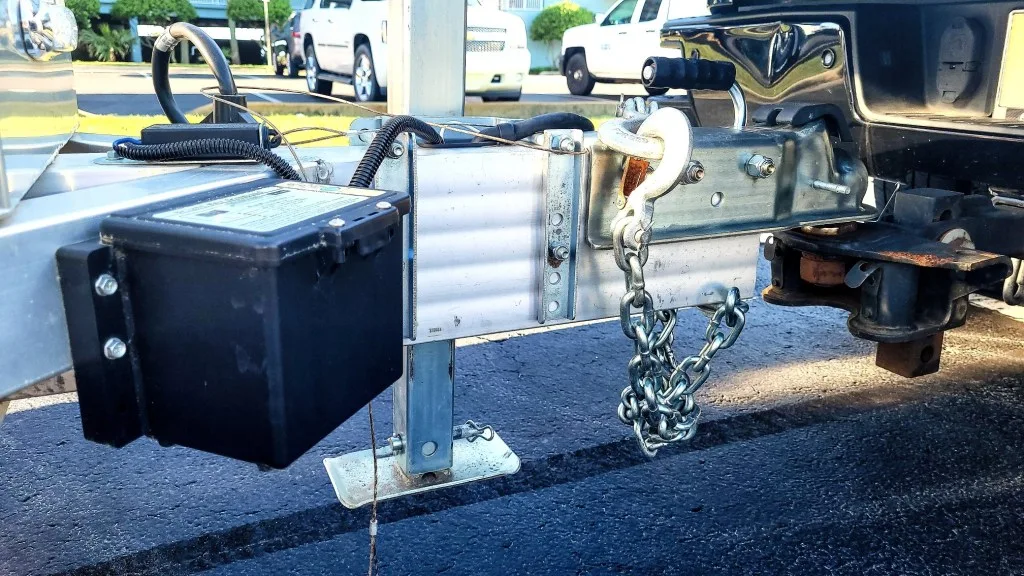Tow ropes, straps, cables, and chains: all different devices meant to do similar things. But when you or someone else on the road is in a pinch, you need the best one you can get.
In this article, we’re taking a closer look at tow ropes and determining what to use them for, how long they should be, and how you can use one in an emergency.
Let’s dive in.
What Is a Tow Rope?
A tow rope is a heavy-duty and long rope used for towing, pulling stuck vehicles out of a tight situation, and more. These devices are used in emergencies, not for long-term towing.
They’re handy equipment to have with you if you or another driver runs into a problem on the road.
What Can Tow Ropes Be Used For?
You can use tow ropes for short distances, pulling stuck vehicles or trailers out of mud, snow, or sand, and more. They are just for emergencies.
They’re not long-term towing options.
However, if you live in an area that gets a lot of snow or has a lot of muddy roads, it’s always a good idea to have one handy!

What Are Tow Ropes Made From?
A tow rope is an actual rope with twisted or braided strands of material. They are thicker than most other kinds of ropes, and they should be because of the amount of weight they handle.
Common materials include natural or synthetic fibers. Each end has a loop or hook that attaches to the towing vehicles.
Synthetic fiber ropes are the ropes of choice today. These are much stronger than natural fiber ropes, and there are various choices available depending on your needs. You’ll find a maximum pulling capacity on the label, so you know the weight they can safely handle.
How Long Should a Tow Rope Be?
The appropriate length of a tow rope depends entirely upon the application. If you’re using one on the road, the distance between vehicles can be no longer than 15’ by law. In this case, a length of around 15 feet or less is ideal.
If your mostly use your equipment for vehicle recovery, it should be longer. Tow ropes that are around 20’ are popular options for recovery purposes.

What Is a Kinetic Tow Rope?
A kinetic tow rope is a special type of tow rope you use for recovery purposes, like pulling a vehicle out of deep mud or snow.
These store kinetic energy and are used in an aggressive and yanking manner. They’re the rope of choice when you need to get a vehicle out of mud or snow and drive fast and hard to create a yanking force on the stuck vehicle.
Kinetic tow ropes are typically made entirely out of nylon. The nylon has more elasticity and works better for this type of vehicle recovery. You might hear people call this a “yanker rope” or “snatch rope.”
Pro Tip: Unsure what type of vehicle you can tow with? Find out Should You Ever Tow with a Car?
Which Is Better: Tow Rope or Tow Strap?
A tow rope offers advantages over tow straps due to the elasticity. Almost all types of tow ropes have a certain degree of elasticity depending on the material.
Tow straps are very strong and lightweight, but they have almost no elasticity. They’re a great option for towing along a road, but a tow rope makes a better option for vehicle recovery.
Which Is Better: Tow Rope or Tow Chain?
Tow chains are large, heavy, and good in situations where the chains might drag on the ground. Tow chains are better for professional towing and recovery purposes and work well for general towing and lifting.
In an emergency recovery situation, a tow rope is the best option. They are versatile for emergency recovery and general towing, safer for the average person to use, weigh a lot less, and are easier to store than tow chains.
Can You Use a Tow Rope With a Winch?
You should only use a winch with straps or cables designed for the winch. The standard for winching is usually a steel cable. However, you can also use cables made from synthetic fibers or straps, as long as they’re specifically designated for the application.
Never use winches for kinetic recovery, as this can have disastrous consequences. Only use winches with the proper cable and a slow, steady, and controlled pull.

How to Use a Tow Rope
To use a tow rope for pulling a vehicle, first attach it to an appropriate place on the towing vehicle. Always look for a secure spot on the vehicle’s frame that will not break, become damaged, or alter any driving components.
Almost all vehicles come with hook points on the frame, so look for those before mounting your hook or rope. Alternatively, you can also attach to the vehicle’s towing hitch. If possible, run the rope through the frame or area you’re hitching. Secure it to itself so it doesn’t slip off the vehicle.
Once both vehicles are securely and safely connected, you can begin to tow. If towing on the road, have a driver in the towed vehicle for turning and braking. You should never pull a driverless vehicle and never drive at highway speeds when towing with a rope.
Only use this type of towing for slow towing on side roads in an emergency.
Pro Tip: Want to look cooling while cruising down the highway? We found The Coolest Tow Vehicle in the U.S.
Is Having a Tow Rope Worth It?
If you live somewhere with a lot of snow or mud, having a tow rope is a great emergency device. It’s lightweight and easy to store.
Alternatively, if you like to go off-roading, it is a great thing to have. These devices can come in handy and are relatively inexpensive. This makes them worthwhile recovery devices that you can easily store under your seat.
Discover the Best Free Camping Across the USA
To be honest with you, we hate paying for camping. There are so many free campsites in America (with complete privacy).
You should give it a try!
As a matter of fact, these free campsites are yours. Every time you pay federal taxes, you’re contributing to these lands.
Become a FREE CAMPING INSIDER and join the 100,000 campers that love to score the best site!
We’ll send you the 50 Best Free Campsites in the USA (one per state). Access the list by submitting your email below: